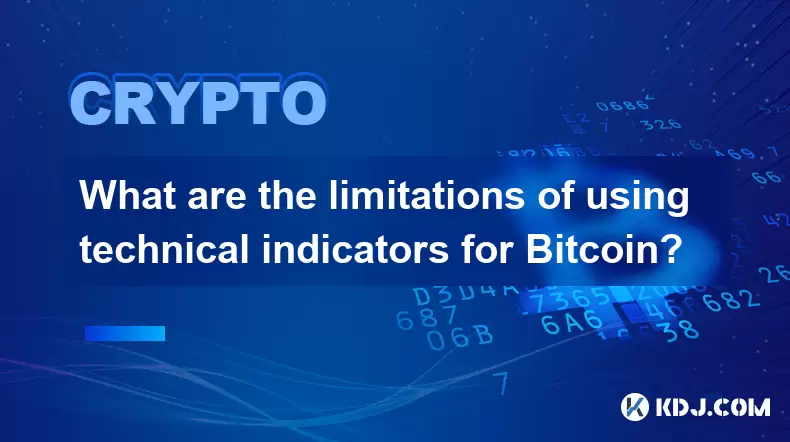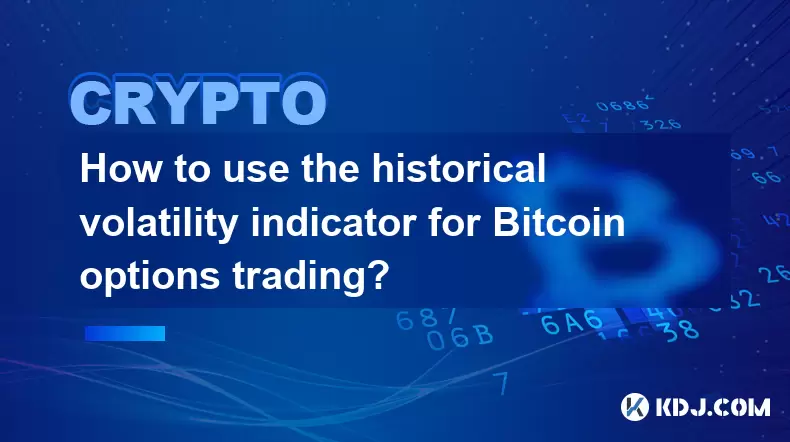-
 Bitcoin
Bitcoin $108,250.0992
0.11% -
 Ethereum
Ethereum $2,515.9404
0.03% -
 Tether USDt
Tether USDt $1.0003
0.00% -
 XRP
XRP $2.2166
-0.19% -
 BNB
BNB $656.5904
0.29% -
 Solana
Solana $147.4122
-0.58% -
 USDC
USDC $1.0000
-0.01% -
 TRON
TRON $0.2830
0.06% -
 Dogecoin
Dogecoin $0.1641
0.27% -
 Cardano
Cardano $0.5739
-0.19% -
 Hyperliquid
Hyperliquid $39.1463
-0.11% -
 Sui
Sui $2.8882
-0.02% -
 Bitcoin Cash
Bitcoin Cash $487.6428
0.31% -
 Chainlink
Chainlink $13.2097
0.07% -
 UNUS SED LEO
UNUS SED LEO $9.0308
0.10% -
 Avalanche
Avalanche $17.8608
0.13% -
 Stellar
Stellar $0.2379
-0.06% -
 Toncoin
Toncoin $2.7400
-0.39% -
 Shiba Inu
Shiba Inu $0.0...01144
-0.36% -
 Litecoin
Litecoin $87.5467
0.66% -
 Hedera
Hedera $0.1538
0.22% -
 Monero
Monero $315.5479
0.36% -
 Dai
Dai $1.0000
0.00% -
 Polkadot
Polkadot $3.3523
-0.71% -
 Ethena USDe
Ethena USDe $1.0003
0.01% -
 Bitget Token
Bitget Token $4.3960
-1.03% -
 Uniswap
Uniswap $7.2663
4.19% -
 Aave
Aave $272.8619
2.04% -
 Pepe
Pepe $0.0...09676
-0.18% -
 Pi
Pi $0.4586
-2.87%
What does Bitcoin mining mean? What role do miners play in the Bitcoin network?
Bitcoin mining is crucial for network security and transaction validation, but its high energy use raises environmental concerns, prompting some miners to use renewable energy sources.
Apr 27, 2025 at 01:00 pm

Bitcoin mining is a critical process in the operation and security of the Bitcoin network. It involves solving complex mathematical problems to validate transactions and add them to the blockchain. Miners use powerful computers to compete in solving these problems, and the first to solve it gets to add a new block of transactions to the blockchain and is rewarded with newly minted bitcoins and transaction fees. This process is known as proof-of-work (PoW) and is essential for maintaining the integrity and decentralized nature of the Bitcoin network.
The role of miners in the Bitcoin network is multifaceted. They are responsible for verifying transactions, securing the network, and issuing new bitcoins. Miners ensure that transactions are legitimate and prevent double-spending, which is crucial for the trust and functionality of the Bitcoin ecosystem. By adding new blocks to the blockchain, miners help to maintain the continuity and immutability of the transaction ledger. Additionally, the mining process itself is what introduces new bitcoins into circulation, controlling the supply and ensuring the economic model of Bitcoin.
The mining process involves several steps that miners must follow to successfully mine a block. Miners collect a set of unconfirmed transactions from the Bitcoin network, which they then attempt to validate by solving a cryptographic puzzle. This puzzle requires finding a hash that meets the network's difficulty target, which is adjusted approximately every two weeks to maintain a consistent block time of about 10 minutes. Once a miner solves the puzzle, they broadcast the new block to the network, where it is verified by other nodes. If the block is accepted, the miner receives the block reward and transaction fees.
The economics of mining play a significant role in the motivation behind mining. The block reward, which halves approximately every four years, incentivizes miners to continue validating transactions and securing the network. As of the last halving in 2020, the block reward is 6.25 bitcoins. Additionally, miners earn transaction fees, which are paid by users to prioritize their transactions. The combination of block rewards and transaction fees forms the economic incentive for miners to invest in the necessary hardware and electricity to mine Bitcoin.
The impact of mining on the environment has become a topic of significant discussion within the cryptocurrency community. Bitcoin mining consumes a substantial amount of electricity, leading to concerns about its environmental footprint. Miners often seek out regions with cheap electricity, which can lead to increased energy consumption in those areas. Some miners use renewable energy sources, such as hydroelectric or solar power, to mitigate their environmental impact. However, the overall energy consumption of the Bitcoin network remains a point of contention and an area of ongoing research and development.
The technological aspect of mining involves the use of specialized hardware known as Application-Specific Integrated Circuits (ASICs). These devices are designed specifically for Bitcoin mining and are much more efficient than general-purpose computers. The evolution of mining hardware has led to an arms race among miners to acquire the most powerful and energy-efficient ASICs. This technological advancement has increased the difficulty of mining, making it more challenging for individual miners to compete with large mining pools and operations.
The social and political implications of mining are also noteworthy. The decentralized nature of Bitcoin mining means that anyone can participate, but the concentration of mining power in certain regions or among specific groups can lead to concerns about centralization. Some countries have imposed regulations or outright bans on Bitcoin mining due to its energy consumption or to control the flow of capital. These social and political factors can influence the distribution of mining power and the overall security of the Bitcoin network.
The security provided by miners is fundamental to the trust in the Bitcoin network. By requiring miners to expend significant computational resources to add new blocks, the proof-of-work system makes it extremely costly and impractical to attempt to alter the blockchain. This security mechanism ensures that once transactions are confirmed and added to the blockchain, they are virtually immutable. Miners thus play a crucial role in maintaining the integrity and trustworthiness of the Bitcoin network.
The evolution of mining has seen significant changes since Bitcoin's inception. Initially, mining could be done with regular computers, but as the network grew and the difficulty increased, it became necessary to use more specialized and powerful hardware. The development of ASICs marked a significant turning point in mining technology, making it more efficient but also more centralized. The rise of mining pools, where miners combine their computational resources to increase their chances of solving the cryptographic puzzle, has also shaped the landscape of Bitcoin mining.
The challenges faced by miners include not only the technical and economic aspects but also regulatory and operational issues. Miners must navigate a complex landscape of local and international regulations, which can impact their ability to operate. The high cost of electricity and hardware, as well as the need for constant upgrades to stay competitive, pose significant financial challenges. Additionally, miners must deal with the volatility of Bitcoin's price, which can affect the profitability of their operations.
The role of miners in network governance is another important aspect of their function within the Bitcoin ecosystem. While miners do not have direct control over the protocol's rules, they can influence the direction of the network through their voting power in the form of hash rate. Miners can choose to support or oppose proposed changes to the Bitcoin protocol, such as upgrades or hard forks, by signaling their preference through the blocks they mine. This indirect governance role underscores the importance of miners in the ongoing development and maintenance of the Bitcoin network.
The educational aspect of mining is often overlooked but is crucial for the broader adoption and understanding of Bitcoin. Miners often serve as educators within the community, sharing their knowledge and experiences with others. They contribute to forums, write articles, and participate in conferences to spread awareness about the technical and economic aspects of Bitcoin mining. This educational role helps to demystify the process and encourages more individuals to participate in the network.
The ethical considerations of mining are also worth discussing. Some argue that the energy consumption associated with mining is ethically questionable, while others believe that the security and decentralization provided by miners justify the energy use. The debate over the ethics of mining reflects broader discussions about the role of technology in society and the balance between innovation and sustainability.
The impact of mining on Bitcoin's price is a complex and often debated topic. While miners do not directly set the price of Bitcoin, their activities can influence it. The introduction of new bitcoins through mining increases the supply, which can affect the price, especially in the short term. Additionally, the cost of mining, including electricity and hardware, can influence miners' willingness to sell their mined bitcoins, which in turn can impact the market. The interplay between mining and price is a dynamic aspect of the Bitcoin ecosystem.
The role of miners in transaction processing is another key function. Miners prioritize transactions based on the fees attached to them, which incentivizes users to pay higher fees for faster confirmation. This fee market helps to regulate the flow of transactions on the network and ensures that miners are compensated for their work. The role of miners in transaction processing is essential for the smooth operation of the Bitcoin network and the timely confirmation of transactions.
Frequently Asked Questions
Q: Can anyone become a Bitcoin miner?
A: Yes, anyone can become a Bitcoin miner, but it requires significant investment in specialized hardware and electricity. The process has become highly competitive, and individual miners often join mining pools to increase their chances of earning rewards.
Q: How does the difficulty of mining affect the network?
A: The difficulty of mining is adjusted to maintain a consistent block time of about 10 minutes. As more miners join the network and the total hash rate increases, the difficulty rises to ensure that the block time remains stable. This adjustment helps to keep the network secure and prevents any single miner from dominating the process.
Q: What happens if a miner tries to cheat the system?
A: If a miner attempts to cheat by adding invalid transactions or altering the blockchain, other nodes on the network will reject the block. The proof-of-work system makes it extremely costly to attempt such actions, as the miner would need to control a majority of the network's hash rate to succeed, a scenario known as a 51% attack.
Q: How do miners contribute to the decentralization of Bitcoin?
A: Miners contribute to the decentralization of Bitcoin by validating transactions and adding them to the blockchain in a distributed manner. The more miners there are, and the more geographically and politically diverse they are, the more decentralized the network becomes. This decentralization is crucial for the security and resilience of the Bitcoin network.
Disclaimer:info@kdj.com
The information provided is not trading advice. kdj.com does not assume any responsibility for any investments made based on the information provided in this article. Cryptocurrencies are highly volatile and it is highly recommended that you invest with caution after thorough research!
If you believe that the content used on this website infringes your copyright, please contact us immediately (info@kdj.com) and we will delete it promptly.
- Litecoin Breakout Watch: What Traders Need to Know Now
- 2025-07-06 16:50:13
- Bitcoin, Solana, Ethereum: Decoding the Latest Buzz on the Blockchain
- 2025-07-06 16:50:13
- Widnes Resident's 50p Could Be Your Ticket to Easy Street: Rare Coin Mania!
- 2025-07-06 16:55:13
- Bitcoin, Solaris Presale, and Token Rewards: What's the Buzz?
- 2025-07-06 16:55:13
- Ethereum Under Pressure: Price Drop Amid Global Uncertainties
- 2025-07-06 17:00:13
- XRP, SEC Case, and Prosperity: A New Era for XRP Holders?
- 2025-07-06 17:10:13
Related knowledge

What is the Woodies CCI indicator and can it be used for Bitcoin?
Jul 04,2025 at 05:14pm
Understanding the Woodies CCI IndicatorThe Woodies CCI indicator is a variation of the traditional Commodity Channel Index (CCI), which was originally developed by Donald Lambert. The standard CCI measures the current price level relative to an average price over a given period, typically 14. However, the Woodies version modifies this calculation to mak...

How to use indicators to trade the opening range breakout for Bitcoin CME futures?
Jul 05,2025 at 07:35pm
What Is the Opening Range Breakout Strategy?The opening range breakout (ORB) strategy is a popular trading technique used in both traditional markets and cryptocurrency futures, particularly for Bitcoin on the CME. This method involves identifying a specific price range formed during the early phase of a trading session and then taking positions when th...

What does a bearish cross on the Stochastic RSI mean for Bitcoin?
Jul 05,2025 at 07:18pm
Understanding the Stochastic RSI IndicatorThe Stochastic RSI (Relative Strength Index) is a momentum oscillator used in technical analysis to identify overbought or oversold conditions in an asset's price. It combines two well-known indicators — the RSI and the Stochastic Oscillator — to provide more nuanced signals than either could alone. The Stochast...

What are the limitations of using technical indicators for Bitcoin?
Jul 06,2025 at 03:35am
Understanding the Role of Technical Indicators in Cryptocurrency TradingIn the realm of Bitcoin trading, technical indicators are tools used by traders to analyze historical price data and volume to predict future price movements. These indicators—such as Moving Averages, Relative Strength Index (RSI), and MACD—are widely adopted across traditional fina...

How to use the historical volatility indicator for Bitcoin options trading?
Jul 06,2025 at 04:14am
Understanding the Historical Volatility IndicatorThe historical volatility indicator (HV) is a statistical measure used to assess the price fluctuations of an asset over a specific time period. In the context of Bitcoin options trading, this metric helps traders evaluate past price movements to anticipate potential future swings. Unlike implied volatili...

Best indicator for confirming chart patterns like head and shoulders on Bitcoin
Jul 06,2025 at 01:07pm
Understanding Chart Patterns in Cryptocurrency TradingIn the volatile world of Bitcoin trading, chart patterns serve as critical tools for identifying potential price movements. Among these, the head and shoulders pattern is one of the most reliable reversal indicators. Recognizing this formation requires not only visual identification but also confirma...

What is the Woodies CCI indicator and can it be used for Bitcoin?
Jul 04,2025 at 05:14pm
Understanding the Woodies CCI IndicatorThe Woodies CCI indicator is a variation of the traditional Commodity Channel Index (CCI), which was originally developed by Donald Lambert. The standard CCI measures the current price level relative to an average price over a given period, typically 14. However, the Woodies version modifies this calculation to mak...

How to use indicators to trade the opening range breakout for Bitcoin CME futures?
Jul 05,2025 at 07:35pm
What Is the Opening Range Breakout Strategy?The opening range breakout (ORB) strategy is a popular trading technique used in both traditional markets and cryptocurrency futures, particularly for Bitcoin on the CME. This method involves identifying a specific price range formed during the early phase of a trading session and then taking positions when th...

What does a bearish cross on the Stochastic RSI mean for Bitcoin?
Jul 05,2025 at 07:18pm
Understanding the Stochastic RSI IndicatorThe Stochastic RSI (Relative Strength Index) is a momentum oscillator used in technical analysis to identify overbought or oversold conditions in an asset's price. It combines two well-known indicators — the RSI and the Stochastic Oscillator — to provide more nuanced signals than either could alone. The Stochast...

What are the limitations of using technical indicators for Bitcoin?
Jul 06,2025 at 03:35am
Understanding the Role of Technical Indicators in Cryptocurrency TradingIn the realm of Bitcoin trading, technical indicators are tools used by traders to analyze historical price data and volume to predict future price movements. These indicators—such as Moving Averages, Relative Strength Index (RSI), and MACD—are widely adopted across traditional fina...

How to use the historical volatility indicator for Bitcoin options trading?
Jul 06,2025 at 04:14am
Understanding the Historical Volatility IndicatorThe historical volatility indicator (HV) is a statistical measure used to assess the price fluctuations of an asset over a specific time period. In the context of Bitcoin options trading, this metric helps traders evaluate past price movements to anticipate potential future swings. Unlike implied volatili...

Best indicator for confirming chart patterns like head and shoulders on Bitcoin
Jul 06,2025 at 01:07pm
Understanding Chart Patterns in Cryptocurrency TradingIn the volatile world of Bitcoin trading, chart patterns serve as critical tools for identifying potential price movements. Among these, the head and shoulders pattern is one of the most reliable reversal indicators. Recognizing this formation requires not only visual identification but also confirma...
See all articles

























































































